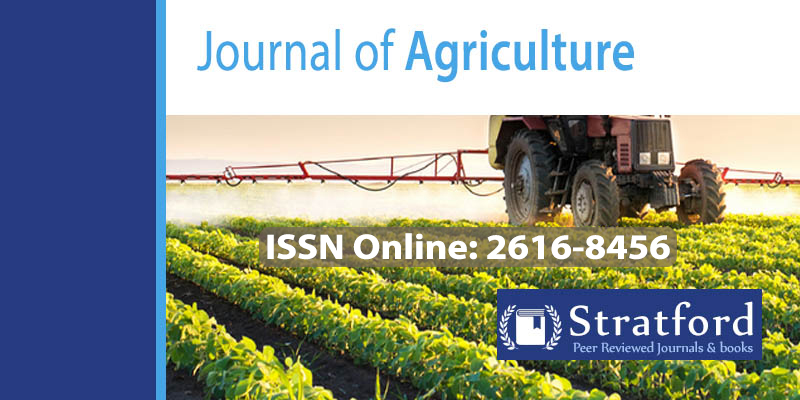Rural Non-Farm Enterprises Supporting the Agricultural Sector and their Relative Success in Kiambu County, Kenya
DOI:
https://doi.org/10.53819/81018102t2077Abstract
Rural areas encounter numerous challenges, which include poverty, food insecurity and unemployment. Declining productions in agribusiness plays a critical impact in having more individuals to partake in agricultural non-farm activities in the rural area to support their livelihoods. This study sought to identify the different kinds of rural non-farm enterprises (RNFEs) that support the agricultural sector in Kiambu County and their relative success. Ann epistemology philosophy was adopted. The target population was all non-farm small and medium enterprises (SMEs) in Kiambu County who have prevailed by supporting agrarian related exercises. This population of RNFEs came from every one of the 12 sub-areas: Gatundu North, Gatundu South, Thika, Juja, Githunguri, Ruiru, Kiambu, Kiambaa, Kabete, Kikuyu, Lari and Limuru. The study investigated five rural non-farm undertakings occupied with the accompanying regions: agribusiness activities, rural industrialisation ventures, transport services, the travel industry activities and development ventures. The study used questionnaires and interview guides for primary data collection. The findings indicated that what made most of RNFEs to begin the business was to bring in cash and utilized as a type of revenue. The study correlation results between the diversity of RNFEs that support the agricultural sector and rural livelihood outcome was positive and significant. The regression model depicted a positive and significant relationship between the various kinds of RNFEs that support the agricultural sector and rural livelihood outcomes. The inferential statistics demonstrated that the relationship between various types of RNFEs that help the effect of country non-farm undertakings on rural business results are significant. Therefore, is the study concluded that the help of RNFEs occupied with farming does affect rural business results in rural regions. Besides operating related rural-based commercial activities including agro-processing and ancillary commercial, it is possible to introduce activities to provide services to facilitate the adjoining agricultural commercial activities such as sale of fertilisers, insecticides or improved seeds.
Keywords: Rural Non-Farm Enterprises, Agricultural Sector, Kiambu County, Kenya
References
Barrett, C. B., Reardon, T. & Webb P. (2011). Non-farm income diversification and household livelihood strategies in rural Africa: Concepts, dynamics, and policy implications. Food Policy. 26(2), 315-331.
Chambers, R. & Conway G. R. (2012). Sustainable Rural Livelihoods: Practical Concepts for the 21st Century. Institute of Development Studies, Discussion Paper 296.
Dary, S. & Kuunibe, N. (2012). Participation in Rural Non-farm Economic Activities in Ghana. 2.
Department for International Development (DFID). (2014). Sustainable livelihoods and poverty elimination. Department for International Development, London.
Dixon, J. (2016). The socio-economic and socio-cultural determinants of food and nutrition security in developed counties. In: Pritchard, B., Ortiz, R., Shekar, M. (eds) Routledge Handbook of Food and Nutrition Security. London: Routledge.
Ellis, F. (2014). Rural livelihoods and diversity in developing countries: Oxford University Press.
Fabusoro, E. & Omotayo, Akin & Apantaku, Samson & Okuneye, P. (2010). Forms and Determinants of Rural Livelihoods Diversification in Ogun State, Nigeria. Journal of Sustainable Agriculture. 34. 417-438. 10.1080/10440041003680296.
Gordon, A. & Craig, C. (2011). Rural non-farm activities and poverty alleviation in Sub-Saharan Africa. Chatham, UK: Natural Resources Institute, 14, 1-56.
Haggblade, S., Hazell, P. & Reardon, T. (2017). Transforming the rural non-farm economy. Baltimore: Johns Hopkins University Press.
Kenya National Bureau of Statistics. (2017). Kenya Statistical Abstract 2017. Nairobi, Kenya: Kenya National Bureau of Statistics.
Kollmair, M. & Gamper, S. (2012). The Sustainable Livelihood Approach. Input Paper for the Integrated Training Course of NCCR North-South. Development Study Group, University of Zurich.
Lanjouw, J. & Lanjouw, P. (2017). Rural non-farm employment: A survey. World Bank Policy Research Paper, No. 1463.
Nowak, M. (2019). The role of microenterprises in rural industrialisation in Africa. In: Levitsky, J. (ed.), Microenterprises in developing countries: Papers and proceedings of an international conference. London: IT Publications: 57-78. https://doi.org/10.3362/9781780440163.004
Reardon, T. J., Taylor, E., Stamoulis K., Lanjouw, P. & Balisacan, A. (2017). Effects of non-farm employment on rural income inequality in developing countries: An investment perspective. Journal of Agricultural Economics, Wiley Blackwell, 51(2), 266-288. https://doi.org/10.1111/j.1477-9552.2000.tb01228.x
Republic of Kenya, (2018). Economic review of agriculture. Nairobi: The Central Planning and Monitoring Unit, Ministry of Agriculture.
Stifel, D. & Randrianarisoa, J. (2006). Agricultural policy in Madagascar: A seasonal multi-market model. Journal of Policy Modeling. 28. 1023-1027. 10.1016/j.jpolmod.2006.06.018.
Tacoli, Cecilia. (2017). Food (In) Security in Rapidly Urbanising, Low-Income Contexts. International Journal of Environmental Research and Public Health. 14. 1554. 10.3390/ijerph14121554.
Wegulo, F. (2014). Prevalence and composition of rural non-farm activities: Empirical evidence from Kiharu District, Kenya. Egerton Journal, 1(2), 222-239.


